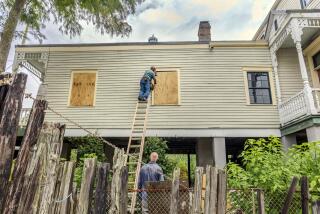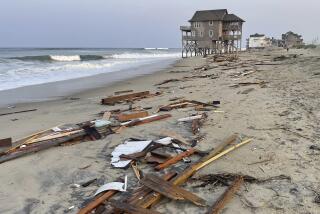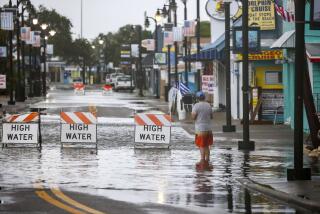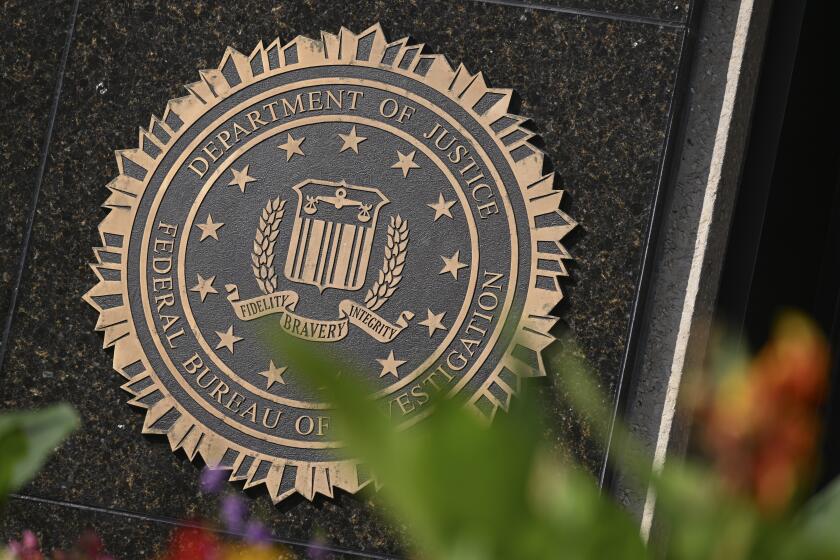Andrea, year’s 1st named storm, heads to Fla.; other states warned
Andrea, the first named storm of the season, worked its way through the Gulf of Mexico toward the Florida coast Thursday, pushing heavy rains and bringing the possibility of scattered tornadoes.
The weather system, technically a tropical storm carrying sustained winds of 60 miles per hour, was expected to make landfall near the Big Bend area of Florida sometime Thursday afternoon. As of about 11 a.m. EDT, Andrea was centered about 160 miles west of Tampa and was moving north-northeast at about 14 mph, according to the National Weather Service.
The system was also a factor across a swath of the East Coast as the weather service posted Florida warnings and watches from Boca Grande to Indian Pass and from Flagler Beach, Fla., all the way to Virginia.
“Tropical Storm Andrea is gaining strength as it moves in the Gulf of Mexico toward the Florida Big Bend. Maximum sustained winds are at 60 mph. There is a potential for tornadoes across central and southern Florida as Andrea approaches the coast Thursday morning. A tropical storm warning is in effect for parts of the Florida west coast, as well as from Flagler Beach, Fla., to Cape Charles Light, Va.,” the weather service said in a posting on its website.
The weather service in Tampa said that there were reports of at least two tornadoes, one in Myakka City and the other in Sun City Center. Damage was slight and there were no reports of injuries.
The Atlantic hurricane season began June 1 and runs through November. In its latest posting earlier his month, the National Oceanic and Atmospheric Administration predicted an “active or extremely active” season this year, following last year’s deadly storm season that included Sandy, which hat tore up the eastern coast, especially coastal New Jersey and metropolitan New York City.
“For the six-month hurricane season, which begins June 1, NOAA’s Atlantic Hurricane Season Outlook says there is a 70% likelihood of 13 to 20 named storms (winds of 39 mph or higher), of which 7 to 11 could become hurricanes (winds of 74 mph or higher), including 3 to 6 major hurricanes (Category 3, 4 or 5; winds of 111 mph or higher),” the agency said.
That prediction is worse than the seasonal average of 12 named storms. Usually there are six hurricanes of which three are considered major.
Andrea is not expected to strengthen into a hurricane, but even lesser storms can bring a strong dousing and flash flooding.
In Florida, storm surges of two to four feet were expected south of where the storm comes ashore, according to the Hurricane Center. Gulf Islands National Seashore campgrounds and the road that runs through the popular beach-front park were closed on Wednesday.
The national seashore abuts Pensacola Beach and the park road frequently floods during heavy rains.
In Alabama, authorities said that 13 people had to be rescued from rough surf kicked up by the storm Wednesday at beaches in two coastal towns. No serious injuries were reported.
ALSO:
Florida woman, 84, claims her Powerball jackpot
Bales on Afghanistan massacre: ‘Sir, I intended to kill them’
Colorado governor signs law to compensate exonerated convicts
More to Read
Sign up for Essential California
The most important California stories and recommendations in your inbox every morning.
You may occasionally receive promotional content from the Los Angeles Times.











